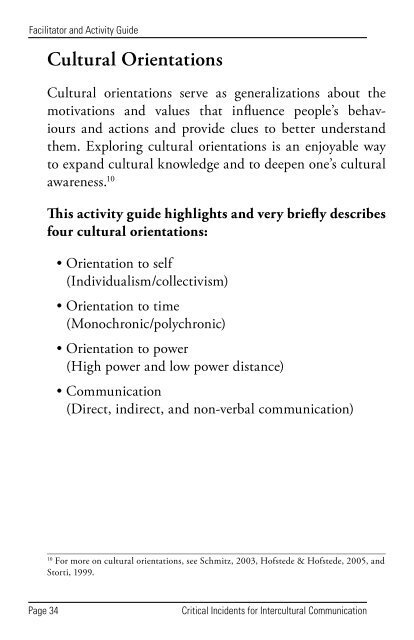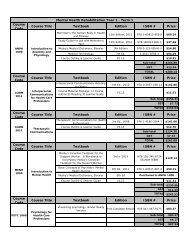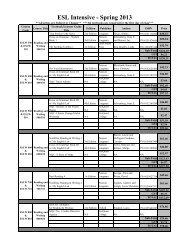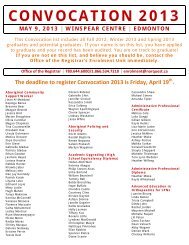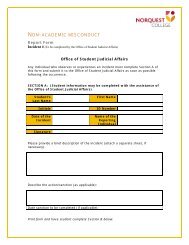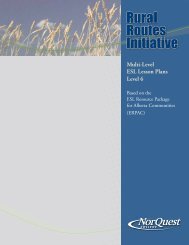Critical Incidents for Intercultural Communication - NorQuest College
Critical Incidents for Intercultural Communication - NorQuest College
Critical Incidents for Intercultural Communication - NorQuest College
- No tags were found...
Create successful ePaper yourself
Turn your PDF publications into a flip-book with our unique Google optimized e-Paper software.
Facilitator and Activity GuideCultural OrientationsCultural orientations serve as generalizations about themotivations and values that influence people’s behavioursand actions and provide clues to better understandthem. Exploring cultural orientations is an enjoyable wayto expand cultural knowledge and to deepen one’s culturalawareness. 10This activity guide highlights and very briefly describesfour cultural orientations:Activities:Facilitator and Activity Guide• Introduce one cultural orientation. Ask participantswhich description they identify with most.• Introduce all of the orientations and ask students toread through the quote cards or the critical incidentsin order to identify whether an orientation might be atthe root of the misunderstanding, assumptions, or attitudesportrayed.• Orientation to self(Individualism/collectivism)• Orientation to time(Monochronic/polychronic)• Orientation to power(High power and low power distance)• <strong>Communication</strong>(Direct, indirect, and non-verbal communication)10For more on cultural orientations, see Schmitz, 2003, Hofstede & Hofstede, 2005, andStorti, 1999.Page 34<strong>Critical</strong> <strong>Incidents</strong> <strong>for</strong> <strong>Intercultural</strong> <strong>Communication</strong><strong>Critical</strong> <strong>Incidents</strong> <strong>for</strong> <strong>Intercultural</strong> <strong>Communication</strong> Page 35


